Step 1. Login to Linode account and navigate to the API Panel
Log in to your Linode Account via the new Linode Cloud Control Panel.
Once inside the control panel click on your username in the top right navigation, then select My Profile from the dropdown menu. Your profile page will open and you now need to select the API Tokens tab.
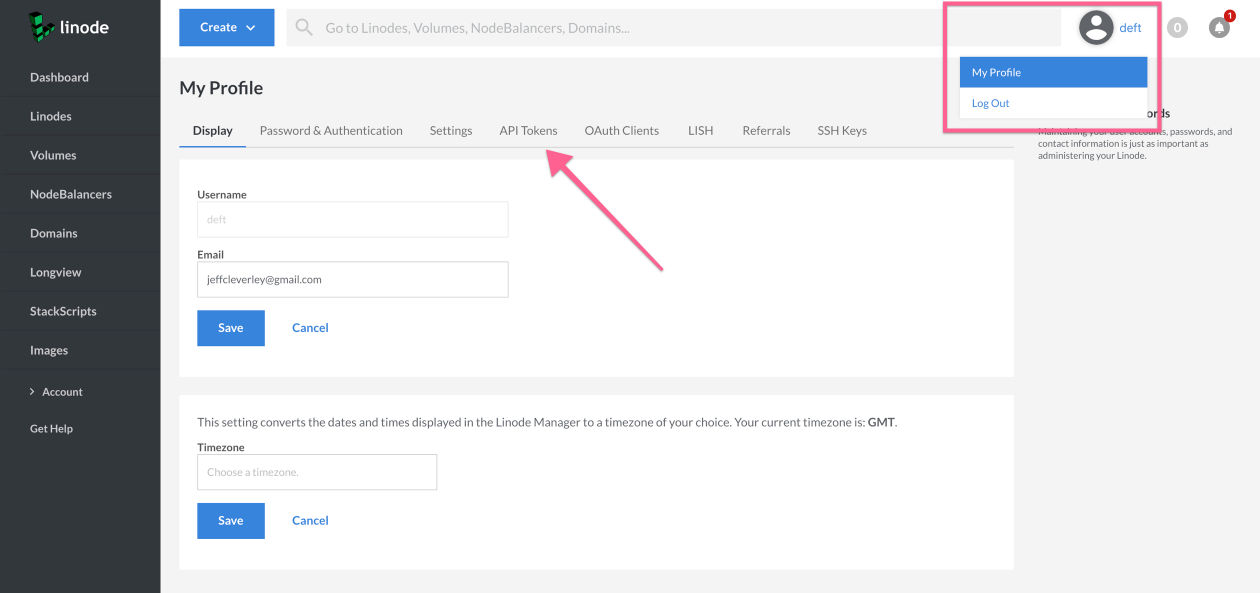
Step 2. Generate a Linode Personal Access Token
In the API Tokens panel you click on the blue Add a Personal Access Token at the top right of the panel.
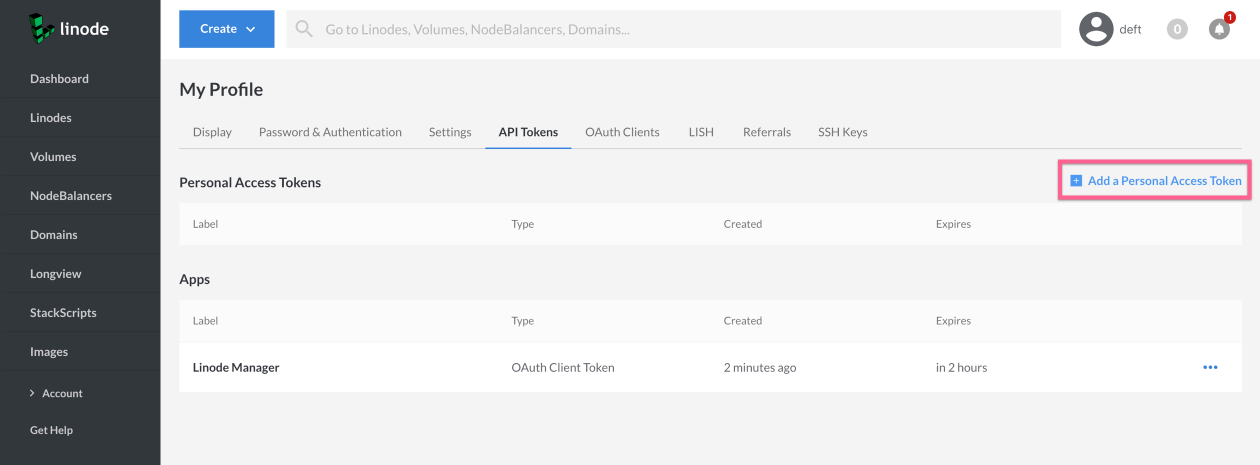
When you click the link a configuration panel will slide out from the right side of your browser.
Use this panel to configure your token.
First, choose a Label and Expiry Period (how long until you need to refresh the token).
Then you need to set the Access Permissions for your API Token, you need to set Linodes to Read/Write, but you may wish to set all permissions to Read/Write.
Once you have configured the correct Access, click Submit to create your Token.
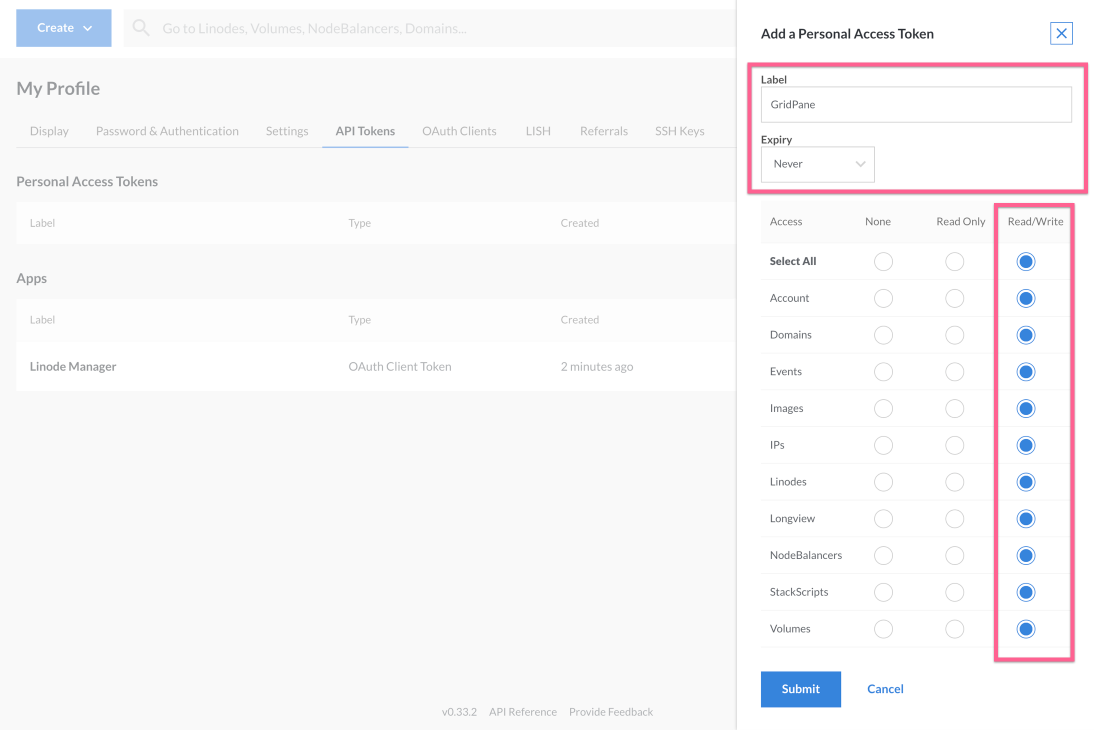
Step 3. Copy your Linode API Personal Access Token
Once you click Submit, the Cloud Console will display your Personal Access token in a pop up modal. This token will only be displayed once, so make sure to store it somewhere safe.
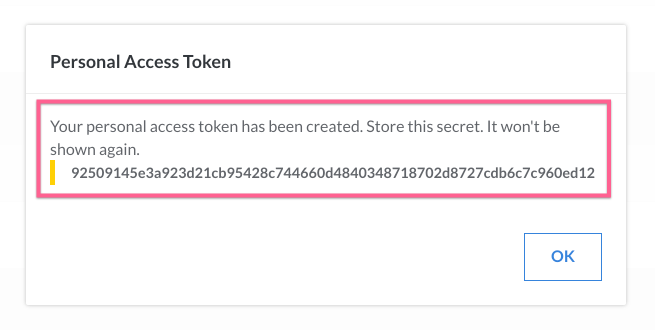
Step 4. Go to your vCanopy Settings
Login to your vCanopy account and click the Your Settings menu item in the dropdown menu accessible by clicking on your username and icon.

Step 5. Enter your Linode Personal Access Token in to vCanopy
Locate and click the Integrations option in the left horizontal menu, and then within Cloud Providers select Linode, and then enter your Personal Access Token you copied in Step.4 above into the Token input field, give your key a name, and then click Create.
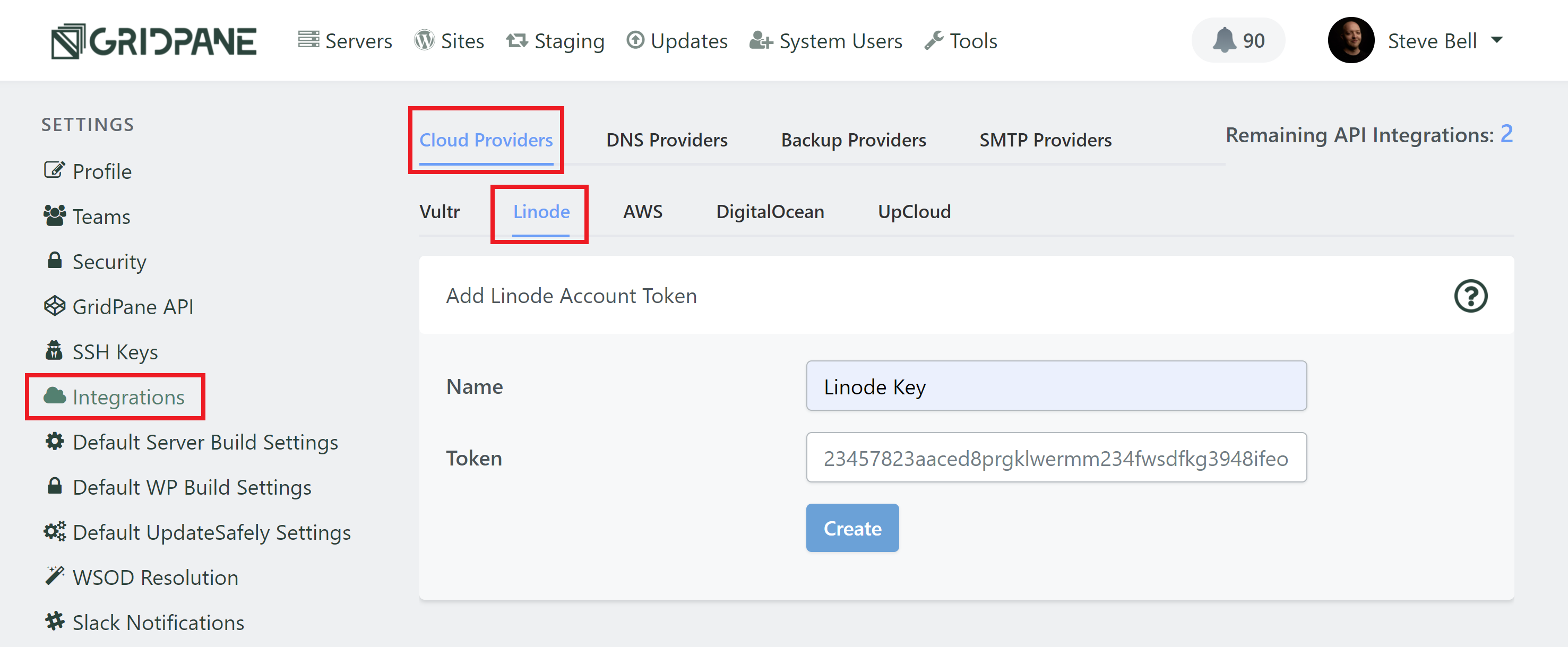
Step 6. View/Edit your Linode API Token
Your Linode API Token will now be available from this settings panel. If you wish to edit or change your API Token, you may do this by clicking the edit button with the blue pencil icon.
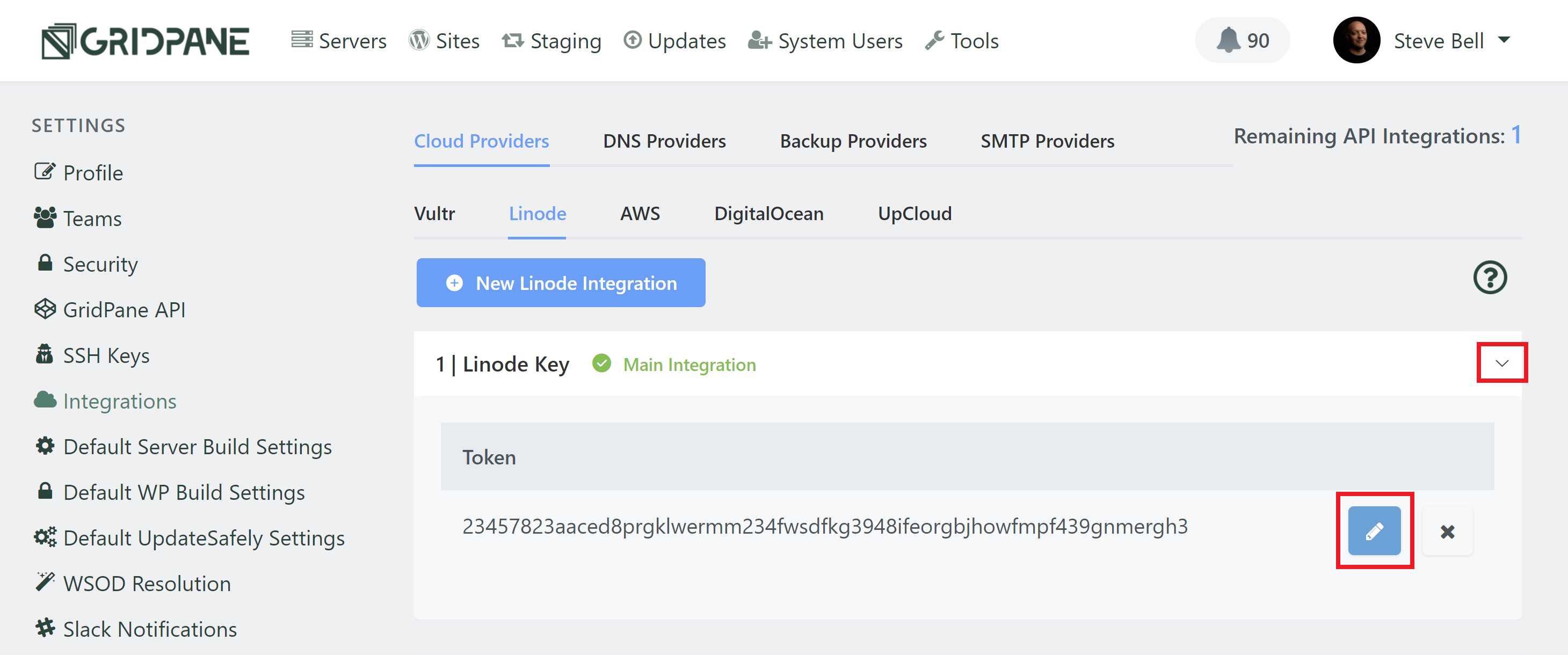
A popup modal will appear and you can easily change your Linode Personal Access Token and click Update.
Step 7. Go to the vCanopy Home to provision an Instance
Now we have our Linode Personal Access Token saved in our vCanopy settings we are able to provision Instances with it from within vCanopy. To do this, first click Home from the vCanopy main menu to access the server provisioning tool.

Step 8. Configure your Linode
Select Linode from the choice of Cloud VPS providers and a configuration panel will open.
Enter an appropriate name for your Linode, and then choose a server plan and region from the dropdown selectors, before choosing whether or not you wish for Linode Backups to be enabled. Currently all Instances are provisioned with Ubuntu 18.04 LTS as the default OS.
IMPORTANT
Linode has a character limit when naming servers. This must be between 3 - 32 characters. 33 characters and above the server will fail to provision.
CHOOSE YOUR DATABASE
If you’re on the developer plan you’ll have the option to choose between Percona and MariaDB for your database.
Percona is based off the new MySQL 8. It has removed query caching (which was deprecated in 5.7 but was still available), and it has more advanced aspects for things like storing and managing json as a storage format. It will likely use more RAM than MariaDB.
MariaDB is still based on MySQL 5.7, which could mean fewer issues importing old WordPress websites from low-quality hosting environments. It will likely use less RAM than Percona.
Both are excellent options.
PROVIDER BACKUPS
We highly recommend that you enable provider backups. It’s a small price to pay for the extra insurance they offer.
CREATE YOUR SERVER
Click the Create Server button when you are happy with your configuration choices.
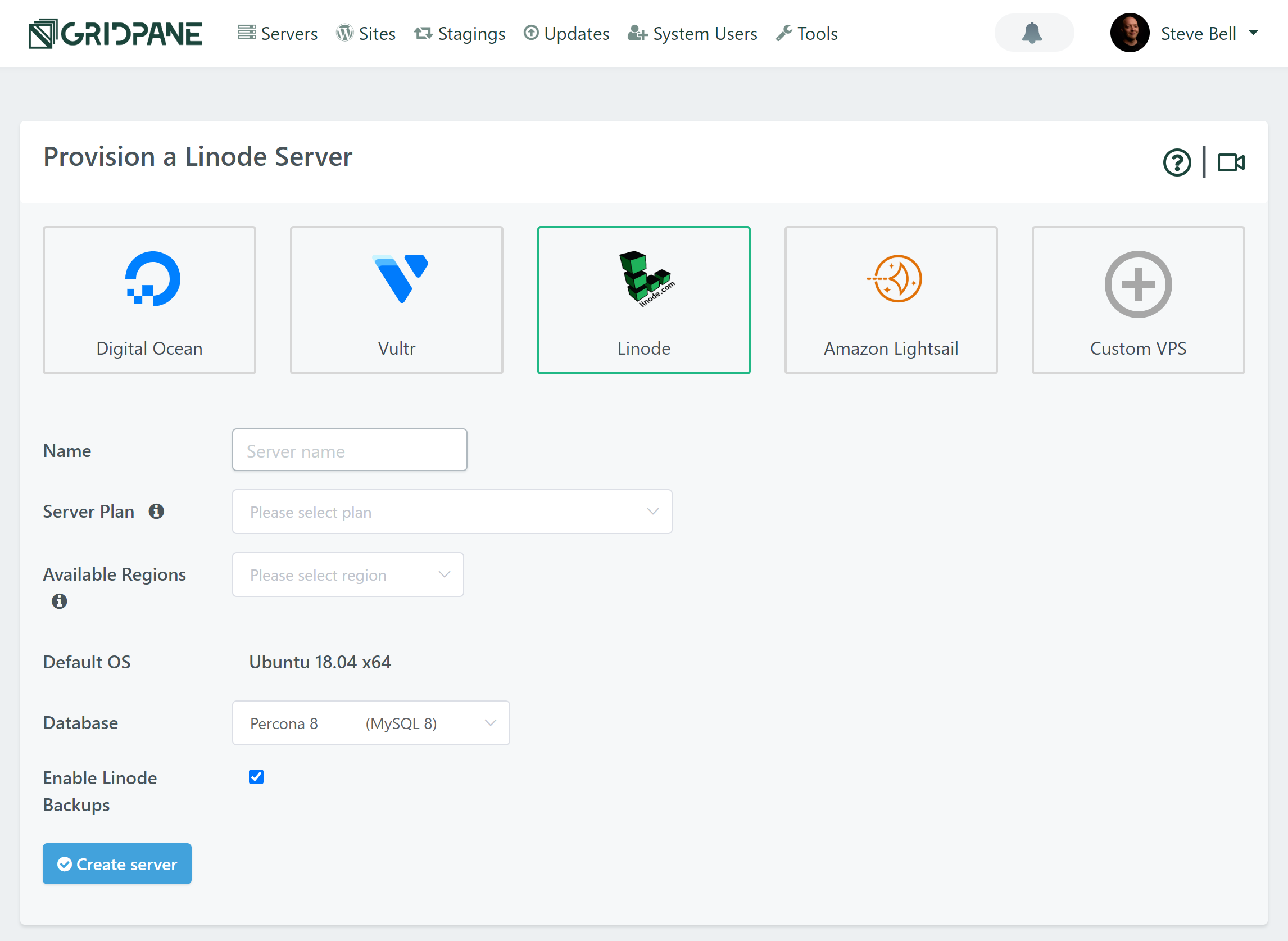
Step 9. Wait patiently while vCanopy provisions your Linode
vCanopy will begin provisioning your instance. You will now be able to see your instance in the Active Servers list.

The process of provisioning your server may take some time depending on the location of your Instance to the vCanopy servers. The process required to set up a highly optimized server stack for hosting Serious WordPress Sites is worth the wait, please be patient.
At any time during the provisioning process you may check what stage the process is at by rolling over the progress bar, a pop up window will display the current job being completed.

Once vCanopy has finished provisioning your Linode the progress bar will turn green and you will be able to deploy some Serious WordPress Sites on it.

Step 10. Deploy your vCanopy WordPress Sites on your Linode
To deploy a site click on the Sites link in the vCanopy main menu to begin the process. We have a separate article that details the steps in detail for you.
Step 11: Contact Linode to unblock SMTP ports
Linode restricts access to ports which are used for mail delivery via SMTP. Follow this article to get them unblocked for your server.






